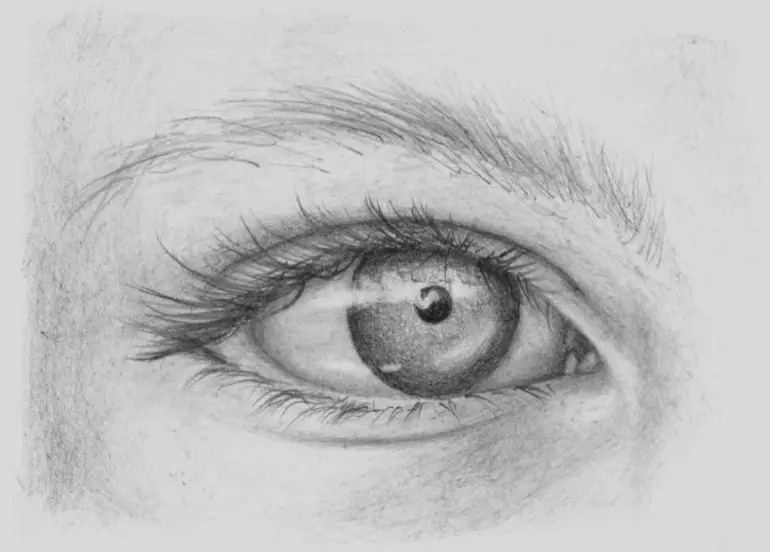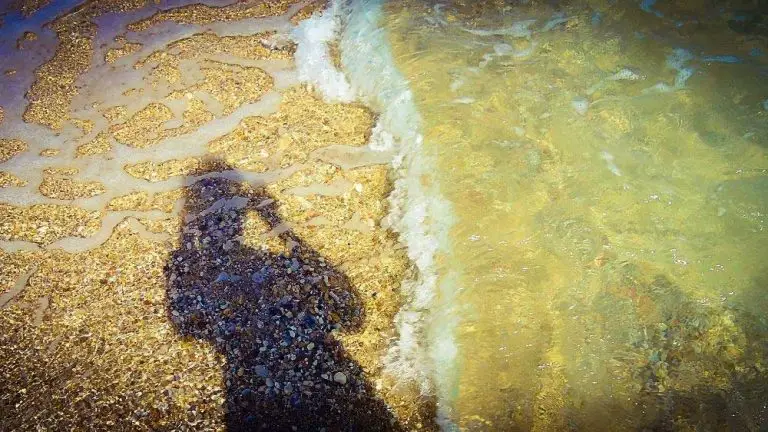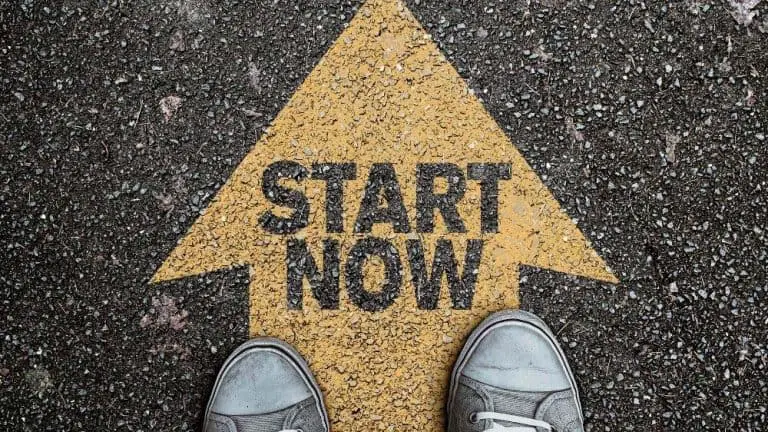Giclée vs Screen Print: What is the Difference?
When it comes to finding a printing method that can produce stunning printed artwork, giclée printing and screen printing are two methods that sometimes get confused. Each method has the ability to create a beautiful fine art print, but are very different in form and function. So, what is the actual difference between a giclée print and a screen print?
The difference between a giclée and a screen print is that in screen printing an original image is created using ink, mesh, and a stencil to print onto the chosen medium, while Giclée printing is used to create a reproduction of an existing digital file onto canvas or paper using an inkjet printer.
They are entirely different processes. One is used to create an original image on paper, fabric or canvas (screen print), and the other is used to reproduce multiple identical versions of a photograph or digital image (giclée print). Continue reading to learn more about these two unique printing processes.

(This article may contain affiliate links and I may earn a commission if you make a purchase)
The Difference Between Giclee and Screen Print
Giclée (pronounced “zhee klei”) and screen printing are two popular methods of printing an image, but they are quite different from one another.
Screen Print
Screen printing (sometimes referred to a Serigraphy) pushes ink through a mesh screen and onto a substrate. A stencil is used to determine which areas of the medium get the ink and which areas are blocked.
The end result of a screen printing session are original hand pulled prints or works of art that generally uses a limited color palette. While the image can be reproduced several times using the same screen and template, it is unique in that it is created by hand using a manual process.
Due to its manual nature, no two screen prints are 100% identical. Different amounts of ink and pressure applied will create slightly different individual results.
Note: Screen printing can also be done by a machine as well, usually in the areas of high production such as creating t-shirts. Most artists creating serigraph prints, however, use a hand process.
Giclée Print
Giclée printing, on the other hand, is used to reproduce digital images with an inkjet printer that applies or sprays tiny dots of colored ink all over the paper or canvas very closely together to reproduce the image.
Many artists consider a screen print to be a true work of art, while a giclée print is thought to be a glorified reproduction of a piece of art.
This is true to some extent. In the case of a painting, the painting itself is the original artwork. A giclée print of the painting is simply a reproduction of the original piece, not the painting itself.
There are, however, types of art that are ideal for giclée printing, where the giclee print is considered the original piece of artwork.
For instance, when it comes to photography, a giclée print will result in a beautiful, photo realistic reproduction that is in fact, the original art piece and can be sold as a limited edition print. The added benefit in this case is that, unlike a painting, the digital image can be reproduced in an identical fashion many times over, and they all look as good as the original print.
Now, let’s look further into these two printing processes to better understand what kinds of images work best with each printing method.
Giclée Printing: High Quality Reproduction
Giclée printing is the most popular method of fine art printing to reproduce images without paying the fine art price of an original piece. It is also the most recommended printing method for reproducing your own artwork.
Giclée printing uses a large format inkjet printer or giclee printer to produce a piece of reproduction art. The inkjet printer will print tiny ink dots all over the canvas or paper very closely together to make the image.
In order to accurately reproduce the image and make it as high quality as possible, a high resolution camera or scanner will be used to either create (as in photography) or scan (in the case of an original painting or drawing) the image.
The inkjet print will be reproduced, at minimum of 300 dots per inch, which will make for a detailed reproduction of the original piece.
At it’s most basic, there are only four colors used in the giclée printing process:
- Cyan
- Magenta
- Yellow, and
- Black
These are the only four colors needed to make full-color prints. These four colors are mixed during application to the media to produce a large range of color tones.
Higher-end photo realistic printers, and those found at professional photo labs, will often use additional ink colors to try to create even more realistic photographic and digital prints.
Nowadays you can create high quality giclée prints at home. The Canon Pixma Pro-100 (Amazon) uses 8 inks to produce pro-level giclée prints from your home or studio.
It is also important that these colors, or inks, going into the printer are “archival.” Archival inks are simply pigment- based rather than being dye-based. It is important for the canvas or paper to be considered archival, as well. Watercolor paper, any type of canvas, and specialty printing papers will do perfectly for giclee printing.
The archival quality of both the medium (paper, canvas, etc.) and the colored inks makes for a long-lasting printed image. An archival quality print is resistant to fading and can be displayed and enjoyed for many years to come.
A specialty printing paper is a type of paper that is made or coated for a certain use, and for giclée printing they generally include:
- Cotton Rag – A paper made from cotton fibers, it is durable and will last many years.
- Matte Paper – A smooth finish paper with a coating to avoid an overly shiny print.
- Canvas Prints – An image printed directly onto a canvas material, and usually wrapped or streched around a wooden frame.
Any combination of these archival inks and papers will create a long-lasting giclee art print.
Screen Printing: High Quality Dyed Artwork
Screen printing, also known as silk screen printing, is a printing process that is used to imprint or dye images onto a medium. You will commonly see screen prints on t-shirts, plastic containers, and even fine art screen prints that are printed onto to fabric, paper, or canvas.
Here’s how silkscreen printing works:
- This process begins with a stencil and a press machine. This stencil will typically be hand cut since the image is original.
- Then, a mesh screen must be placed over the frame. This mesh screen cannot be too tight or too loose, as this can cause the image to be distorted.
- Once the mesh screen is placed over the frame properly, ink is placed onto the screen and the stencil is secured firmly to the surface just below the mesh screen.
- Using a press machine, the mesh is lowered to just above the stencil below it.
- Then, a squeegee is used to push the ink from the front of the image to the back, forcing the mesh screen and stencil to touch, which pushes the ink onto the image at critical angles.
After that is completed, the squeegee will move back into its original position, causing the mesh screen and stencil to separate. The fresh silk screen prints will then need to go through some type of drying or curing process before it is completed.
Why Are Giclée Prints So Expensive?
While looking at some local printing stores and the prices to get images printed, it will become apparent that giclée prints are, typically, more expensive than screen prints. So, why would giclée prints be so expensive?
Giclée are usually more expensive than screen prints for a number of reasons:
- The materials that are used are expensive, simply because they are “archival” products. These “archival” inks and papers are more expensive because, if taken care of, the image will last a long time. The inks have impeccable color tones and prevent any smearing during printing.
- The printing process takes up a lot of time. Since the inkjet printer produces artworks with extreme detail, you can imagine that the printer moves slowly and can take a while to complete.
- A lot of ink is used to make giclée prints. The most common types of inkjet printers will hold 12 different ink cartridges. The price for the ink will definitely start to add up pretty quickly.
- They are printed to last a very long time. Most giclée prints, thanks to the ink and paper, can last up to 200 years as long as it is kept safe from direct sunlight.
The common phrase “You get what you pay for” would seem to ring true for giclee prints since the images can last for such a long time, but is it actually the best method to use for prints?
Which Printing Method Is the Best Printing Method?
In the end, the truth is that the type of print that you prefer will all come down to the type of art you’re looking to create or reproduce.
If you’re a photographer, painter, sketch artist, sculptor, or digital illustrator, producing a giclee print from a digital file is what you are after. If you’re looking to create an original piece of art by hand, then working with the screen printing technique would be your choice.
A common complaint with giclée prints is that the images look just like digital prints with a much higher price tag. On the other hand, if you choose an experienced printing shop, they can use glazes and paint brushes to make the finished product look exactly like the original (if the original is a painting or similar). Additionally, the overall quality of stock paper and other essentials tends to be higher when you buy giclee prints.
The type of image you need printed and the end result desired will determine whether giclée or screen printing will be the best option. Between the two, one is not exactly better than the other, they are each just better for different use cases.
Giclée vs. Screen Printing
In conclusion, giclée printing and screen printing are both great ways to produce high quality prints, but they have some big differences.
The differences between giclee printing and screen printing include:
- Giclée printing uses an inkjet printer, while screen printing uses a blocking stencil and mesh screen.
- Giclée printing reproduces original images, while screen printing creates original images.
- Giclée printing uses more expensive materials making screen printing the cheaper option.
I hope this discussion has cleared up any confusion on the differences between giclée and screen printing, and has helped you determine what type of printing technique will work best for your particular need.
More From Artistry Found:
- Can an Artist Change Their Signature?
- Can You Sell a Painting of a Celebrity? (Explained!)
- Do Self-Portraits Have to Be Realistic? (With Examples!)
Sources
Wikipedia – Screen printing
Wikipedia – Giclee printing








